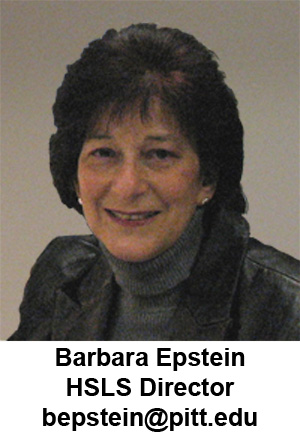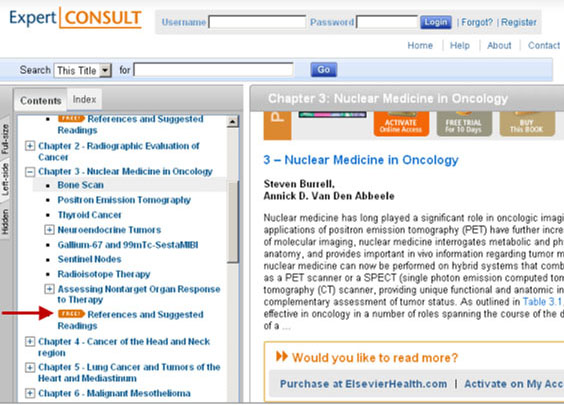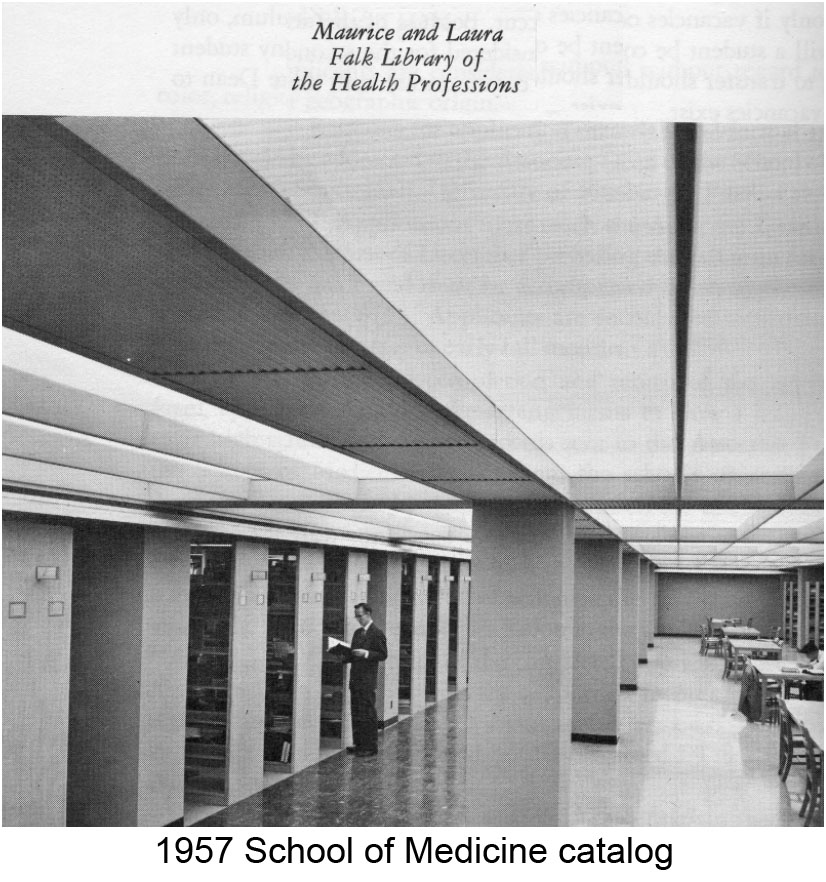HSLS offers classes on database searching, software applications such as Adobe Photoshop, bibliographic management, molecular biology and genetics, and library orientations. For more information visit the online course descriptions.
Classes are held on the first floor of Falk Library (200 Scaife Hall) in classroom 1 and conference room B, and on the second floor in the Computer and Media Center classroom 2. Some classes are also held in the conference room at UPMC Shadyside Libraries. All classes are open to faculty, staff and students of the schools of the health sciences at the University of Pittsburgh and UPMC.
No registration is required for any of these classes. Seating for classes is first-come, first-served, until the class is full. Classes marked with an asterisk (*) qualify for American Medical Association Category 2 continuing education credit.
Class schedules are subject to change. Please consult the online class calendar for the most current information.
HSLS ORIENTATION
Introduction to HSLS Resources and Services at Falk Library
(Meet inside entrance to Library)
Also offered upon request to groups or individuals. Call 412-648-8796.
Introduction to HSLS Services at UPMC Shadyside
Offered upon request to groups or individuals. Call 412-623-2415.
Finding Full-Text Articles at UPMC Shadyside
Offered upon request to groups or individuals. Call 412-623-2415.
SEARCHING DATABASES
PubMed Basics* (Falk Library Classroom 1)
Wednesday, March 2 10-11:30 a.m.
Tuesday, April 5 9-10:30 a.m.
Searching in CINAHL* (Falk Library Classroom 1)
Wednesday, March 16 1-2:30 p.m.
MOLECULAR BIOLOGY AND GENETICS RESOURCES
DNA Analysis Tools* (Falk Library Classroom 2)
Wednesday, March 2 1-3 p.m.
Microarray Data Analysis* (Falk Library Classroom 2)
Wednesday, March 16 1-3 p.m.
Peptide Mass Fingerprinting for Protein Identification* (Falk Library Classroom 2)
Wednesday, March 23 1-3 p.m.
Bioinformatics for Proteomics Studies* (Falk Library Classroom 2)
Wednesday, March 30 1-3 p.m.
Galaxy: A Web-Based Genome Analysis Tool* (Falk Library Classroom 2)
Wednesday, April 6 Part I 10 a.m.-noon
Wednesday, April 6 Part II 2-4 p.m.
Gene Regulation Resources* (Falk Library Classroom 2)
Wednesday, April 13 1-3 p.m.
Sequence Similarity Searching* (Falk Library Classroom 2)
Wednesday, April 20 1-3 p.m.
Protein Sequence Analysis* (Falk Library Classroom 2)
Wednesday, April 27 1-3 p.m.
SOFTWARE TRAINING
EndNote Basics (Falk Library Classroom 2)
(Note: This class is usually full. Please arrive 15 minutes in advance to ensure seating.)
Friday, March 25 10 a.m.-noon
Tuesday, April 19 10 a.m.-noon
Adobe Photoshop for Beginners (Falk Library Classroom 2)
Wednesday, March 9 9-11 a.m.
Thursday, April 14 9-11 a.m.
PowerPoint for Beginners (Falk Library Classroom 2)
Wednesday, March 2 9-11 a.m.
Advanced PowerPoint for Presentations
Wednesday, March 23 9-11 a.m. (UPMC Shadyside Libraries)
Wednesday, April 6 9-11 a.m. (Falk Library Classroom 2)
The WOW Factor: PowerPoint for Posters (Falk Library Classroom 2)
Thursday, April 28 9-11 a.m.
Lunch With A Librarian
These informal, brown-bag lunches are held in Falk Library Conference Room B. Bring your own lunch. Drinks and dessert are provided. For more information visit the online descriptions (http://www.hsls.pitt.edu/services/lunchlibrarian).
Making a Dent in Your Personal Paper Silo
Wednesday, March 16 Noon-1 p.m.
Beyond PubMed-Next Generation Literature Searching
Thursday, March 31 Noon-1 p.m.
Jazz Up Your Fliers and Presentations
Monday, April 4 Noon-1 p.m.
Personal Genomics, Personalized Medicine, and You
Thursday, April 28 Noon-1 p.m.
Classes
Why use PubMed? (UPMC Shadyside Libraries)
Wednesday, April 6 3-4:30 p.m.
Thursday @ Three HSLS UPMC Shadyside Libraries Information Series
These informal sessions are held in the Conference Room at UPMC Shadyside Libraries.
iPads in Medicine
Thursday, March 31 3-4 p.m.
It’s Good to Share: Collaboration Made Easier with Web-Based Tools
Thursday, April 28 3-4 p.m.
CUSTOMIZED CLASSES
Customized classes (http://www.hsls.pitt.edu/services/customizedinstruction) can be developed for your department, course, or other group.
LEARNING @ YOUR PACE
These online tutorials (http://www.hsls.pitt.edu/services/learning_at_your_pace) provide information on getting started at HSLS, focusing on the Web site and popular resources.
 As the vanguard of the baby boomer generation becomes eligible to apply for Medicare in 2011, a significant percentage of librarians will retire in the next five to ten years. HSLS is deeply committed to development of the next generation of health sciences librarians, and we contribute to that effort in many ways.
As the vanguard of the baby boomer generation becomes eligible to apply for Medicare in 2011, a significant percentage of librarians will retire in the next five to ten years. HSLS is deeply committed to development of the next generation of health sciences librarians, and we contribute to that effort in many ways.

 Did you know that the first medical library at Pitt was established in 1912? The library was located in Pennsylvania Hall, as was the medical school. (The original Pennsylvania Hall was demolished in the fall of 1998, and a residence hall was built on that site.) Mabel Crawford Burland was the first librarian and was paid $5 a month. By 1920, the library occupied two rooms in Pennsylvania Hall: one held books in current use and the other had stacks for older materials. From 1920-1938, the medical library was overseen by six different librarians. The library collection in the 1920s contained 3,600 volumes and a small number of current journals.
Did you know that the first medical library at Pitt was established in 1912? The library was located in Pennsylvania Hall, as was the medical school. (The original Pennsylvania Hall was demolished in the fall of 1998, and a residence hall was built on that site.) Mabel Crawford Burland was the first librarian and was paid $5 a month. By 1920, the library occupied two rooms in Pennsylvania Hall: one held books in current use and the other had stacks for older materials. From 1920-1938, the medical library was overseen by six different librarians. The library collection in the 1920s contained 3,600 volumes and a small number of current journals. Friends of France: The Field Service of the American Ambulance Described by Its Members. Boston: Houghton Mifflin, 1916.
Friends of France: The Field Service of the American Ambulance Described by Its Members. Boston: Houghton Mifflin, 1916.